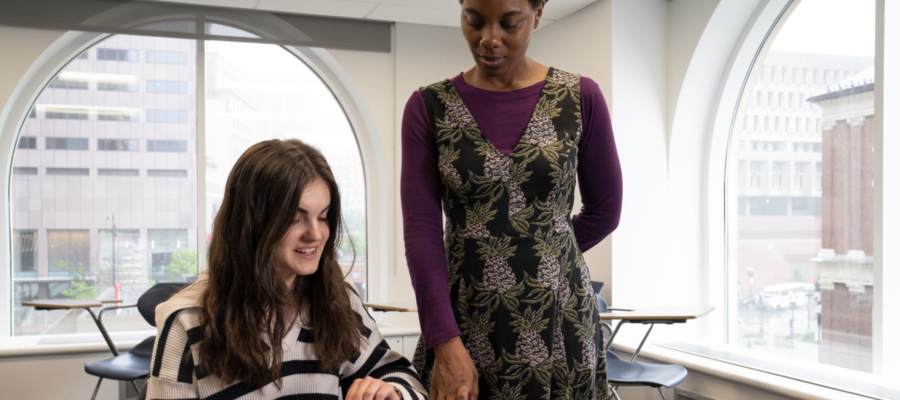If you teach teen English learners, you probably have many questions – about keeping their attention in class, helping them engage with the course material, or even showing them that learning English is worthwhile!
Last year, educators from around the world shared their questions about teaching teens with us, and Dr. Joan Kang Shin is here to provide answers! Joan is an English Language Teaching specialist, Professor of Education, and Series Editor for Impact, Second Edition, National Geographic Learning’s program for teen learners of English.
Keep reading to see Joan’s teaching tips for educators just like you!
“How can I help teens to overcome the fear of making mistakes while learning English?” –Moustapha Molid Elmi, Djibouti
JKS: The key is to build a supportive environment that does not embarrass or punish students for making mistakes. Talk with your students about mistakes being a natural part of language learning. We all make mistakes, even if English is your first or primary language of communication. In fact, students should understand that making mistakes means that they are using the language and trying to learn. Some think it is proof of learning! As a teacher, you could give some examples of when you made a mistake in English that was either funny or embarrassing and how you overcame your fear of mistakes. You can also make a promise to your students that you will help them learn from mistakes and support them. You can also have all students make an agreement that they will not embarrass anyone who makes a mistake and create a community of learners who support one another.
“What are the best ways to encourage teens to read books?” -Aliya, Kazakhstan
JKS: First, whatever students read must be meaningful, purposeful, and relevant to them. Ask them what kinds of topics and texts they like to read. Always keep in mind that the texts teens read might not be a traditional chapter book. It might also be multimodal texts, such as a graphic novel or a digital text on the internet that mixes video, images, and audio in addition to text. As much as possible, give your teens a choice for what kinds of text they can read. If you have them do a research project on a topic related to the unit theme, then your students can choose multiple types of texts.
“Usually teens think that as an individual, they have no control or impact on anything at all. When we tell them that even one person makes a difference, they just tease us or shrug their shoulders. What can we do as teachers to motivate them?” -Anonymous Educator, Turkey
JKS: The best way is to actually do a project that will make a difference in your class, your school, or your community. Show them that they can make a difference! Find one or more projects from coursebooks such as Impact, Second Edition that you think students can do to make a difference in real life. Then work with them to do it!
Dilorom Hushvaktova, an educator based in Uzbekistan, uses Impact projects to motivate her students to explore the world they live in while learning English. Check out this example of a fashion design project from Impact Level 1 that Dilorom did with her students in class! Dilorom says, “This unit of the textbook helps our learners to choose their future professions by designing fashions and presenting them. Some students demonstrated interest in becoming fashion designers while others were dressmakers.”
“How do we help teens become familiar with the variety of English pronunciations in the world?” -Al Amin Chowdhury, Bangladesh
JKS: Why not use videos with people from around the world speaking and using English? That is a great way to help your teens become familiar with different Englishes. There are lots of videos posted online. In addition, Impact, Second Edition has videos of our National Geographic Explorers who come from around the world. There will be lots of video samples for your students to hear different Englishes as well as learn about the work of Explorers in global contexts.
“How do we manage teens who are super passive in class and don’t like standing up or doing physical activities, but get bored when they are seated for a long time?” -Elsie Cutiyog, Vietnam
JKS: Even if students are seated, you can engage them through paired activities, group discussion, or games (using Kahoot or other online quiz games). You could also do a quick ‘Turn and Talk,’ where students need to stand up to share one idea with a partner who is not sitting next to them. It could be someone in front of them, behind them, or diagonal to them. Sometimes students just need a ‘Brain Break,’ which can be a very quick break from your class activities that asks them to stand up and stretch, perhaps even do a few yoga poses. It could be a one-minute dance break where students get to choose a song, and you play it for one minute while students dance at their desks. If you don’t have time to take a break, you could do a ‘Stretch and Think’ when students can stay seated or stand up and stretch while they think about an answer to a question. Find creative ways to keep your students engaged and active, even if you can’t have them get up and do physical activities in your classroom.
We hope Joan has given you some new ideas to try out with your teen English learners!
Join National Geographic Learning’s educator community for more professional development content on teaching teens, including expert advice and special educator events!
National Geographic Learning’s Impact, Second Edition has all the resources you need to help your teens understand themselves, each other, and the world they live in…all while learning English.




The webinar Motivating Teen English Learners: Fresh Ideas for Teaching Grammar was insightful and engaging. It provided creative strategies to make grammar lessons more interactive and enjoyable for teenagers. The practical techniques shared, such as gamification, real-life applications, and digital tools, can help educators foster a more dynamic learning environment. This session was a great reminder that grammar doesn’t have to be tedious it can be fun, relevant, and meaningful for students.
Thanks for your positive feedback, Marjorie! I am so happy you were able to join the webinar. As you noted, grammar can be enjoyable for our teenage learners if we are creative and use lots of different strategies to engage them. Even grammar can spark joy, right?